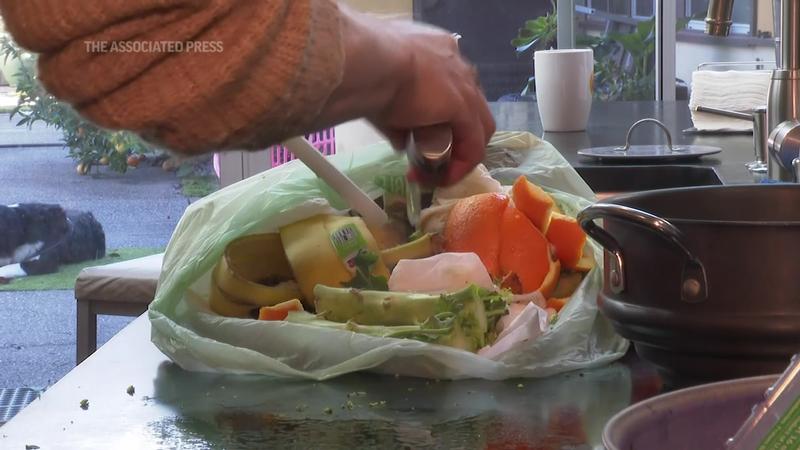Mandatory food recycling to begin in California
[anvplayer video=”5076073″ station=”998130″]
Banana peels, chicken bones and leftover veggies soon won’t be allowed in most California trash bins under a mandatory food recycling program designed to reduce greenhouse gas emissions from landfills.
The goal is to turn food scraps into compost or energy rather than let them decay and emit methane, a gas many times more potent than carbon.
There’s a growing recognition about the role food waste plays in climate change; before emitting methane as it decays, food that no one eats wastes energy and resources on production, transportation and packaging.
About 40% of food is wasted in the United States and once that food is in landfills it creates about 15% of the nation’s methane emissions, according to the U.S. Environmental Protection Agency.
California’s law, passed in 2016, tackles food waste in a few ways.

Several major California cities will not reach a January deadline to launch food recycling programs.[AP Video]
Starting in January, local governments and entities that collect trash are supposed to have mandatory food recycling programs in place.
Many cities will provide residents, in single-family homes and apartments, with countertop food waste bins that can hold scraps for a day or two before they’re dumped in green waste bins alongside yard waste.
But setting the goal is easier than meeting it.
Major cities like Los Angeles, San Diego and Sacramento won’t have their programs ready to go by January.
Meanwhile, only about 35 of the state’s roughly 200 composting facilities are currently able to take food waste, said Neil Edgar, executive director of the California Compost Coalition.
Trash collection fees will go up in many places as local governments spend money to help create new composting facilities.
A food recycling program hasn’t yet been tried at this scale.
Some major cities, including San Francisco, already require residents to recycle food waste.
Several states in New England have commercial food recycling programs, and Vermont requires households participate.
California has more than 60 times as many people.
The 75% goal is statewide, and some rural areas where bears could pose a problem are among those exempted from the law.
Once the food is in the green waste bin, it will go to a facility that can compost it or use anaerobic digestion to turn it into energy.
Cities will then be required to buy back some of product, creating a resource loop that advocates say is more climate friendly and economically sensible than simply throwing food waste in the trash.
Some cities are ahead of the curve.
Davis, home to about 68,000 people, launched its food recycling program back in 2016 and is seeing success.
Joy Klineberg, a Davis mother of three, puts coffee grinds, fruit rinds, apple cores and cooking scraps into a metal bin that sits on her countertop.
When she prepares dinners in the morning, she empties the excess from the cutting board right into the bin.
Recycling her food waste has dramatically lessened how much traditional trash her family produces.
She usually puts a folded up paper towel in the bottom of the bin to catch any excess moisture that may drip from the scraps, but smells haven’t been a problem.
The most annoying part is a typical household complaint: "Honestly, I’m the only person who dumps the bag," she lamented.